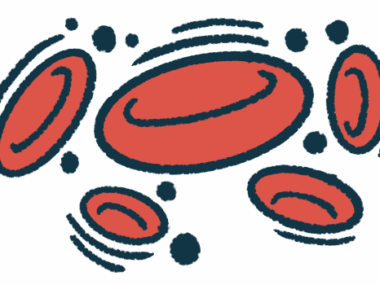Insights from a recent webinar on CAD, including its diagnosis
Takeaways from an expert's report cover iron supplements and more
Written by |

Carefully, I put my full glass of soda on the tray on my bed. Pokey, my companion and loyal canine, snuggled next to me. Sighing contentedly, he sensed that we’d be together for a while as I listened to a webinar.
The presentation was by the Cold Agglutinin Disease Foundation, a nonprofit dealing with my disease, known as CAD; it’s a rare autoimmune disorder in which self-targeting antibodies attack and destroy red blood cells at low temperatures. Jeremy Lorber, a hematologist-oncologist at Cedars-Sinai Medical Center in Los Angeles, covered his material well and simply enough for a layman to understand.
The basic challenges of diagnosis
After outlining what he’d discuss, Lorber began by describing how CAD is diagnosed. I sat up straight and leaned forward. Perhaps he’d shed some light on my own diagnosis. Since I began showing some symptoms in the early 2000s and ran the gamut of possible nonspecific ailments, and since doctors along the way treated only one or two surface complaints, I’ve wondered, “How in the world was this missed? What took so dadgum long to get diagnosed and treated?”
I have residual anger at being labeled a hypochondriac and subsequently dismissed.
Lorber hit on some things that rang bells in my memory, including failed blood tests, which couldn’t be run because of agglutination as well as acrocyanosis and/or Raynaud’s phenomenon. The first happened because the labs didn’t know my blood needed to be handled carefully. The second two involve discoloration of the extremities.
He gave some reasons for my trouble getting diagnosed. “One, CAD is very rare, so the average hematologist-oncologist probably has zero patients with CAD,” he said. “The average general doctor probably is not even aware of CAD or maybe learned it once in medical school and forgot it.”
I need to remember that doctors are human beings like the rest of us and are still learning about our magnificent human body. We “CADdies,” as those with CAD call ourselves, are at the forefront of medical knowledge. Yippee!
Did the symptoms cause CAD, or did CAD cause the symptoms?
I’ve been confused about whether my CAD was caused by lymphoma or whether lymphoma, which my doctor tells me I had, was caused by my CAD. I haven’t understood that, and I’m not any closer to enlightenment. Lorber gave me some insight into why I’m confused. He said, “We don’t always know [why CAD happened in the first place]. At its root, … [it is] a clonal B-cell disorder.”
That I understood. My B-cells are abnormal: I’ve known that since visiting a doctor in Singapore in 2016. At that time I entered a “whine and worry” period, though medical professionals have tried to correct me, saying it’s really a “watch and wait” time.
Lorber also explained the difference between extravascular hemolysis (destruction of the red blood cells outside the vessels) and intravascular hemolysis (destruction within the vessels). I found that interesting, but not something applicable to me. I’ve cataloged it in my brain as something that may help me win at Trivial Pursuit.
Near the end of the presentation, Lorber was asked whether we CADdies needed iron supplementation because of hemolysis. His short answer was, “No.” He continued by explaining, “When the red cells break down, the iron is not usually lost [in] your body; the iron is still there unless you are bleeding. You don’t lose the iron.”
I hadn’t realized that before, and I’m thankful for the warning.
Using what I heard
Information is always helpful; it enables us to make good decisions. I’m glad Lorber took the time to present this information so I could understand better what’s needed to keep me healthy.
I gained two key pieces of reinforcement from the webinar. First, I’ll remember to be firm about the careful handling of my blood. Without accurate results, doctors cannot gain clear insight into what I’m facing. The second is to be steadfast in my refusal when I’m offered iron supplements by well-intentioned friends. My doctor has told me it’s unnecessary, and now I can tell my family and friends why.
Lorber’s presentation encouraged me about the future, as well. He shared with us listeners some treatments that may be available in the years to come; the research is being done now! Sure, these new medicines may prove to be ineffective in the treatment of CAD. On the other hand, one of them may be a cure.
Note: Cold Agglutinin Disease News is strictly a news and information website about the disease. It does not provide medical advice, diagnosis, or treatment. This content is not intended to be a substitute for professional medical advice, diagnosis, or treatment. Always seek the advice of your physician or other qualified health provider with any questions you may have regarding a medical condition. Never disregard professional medical advice or delay in seeking it because of something you have read on this website. The opinions expressed in this column are not those of Cold Agglutinin Disease News or its parent company, Bionews, and are intended to spark discussion about issues pertaining to cold agglutinin disease.







Leave a comment
Fill in the required fields to post. Your email address will not be published.